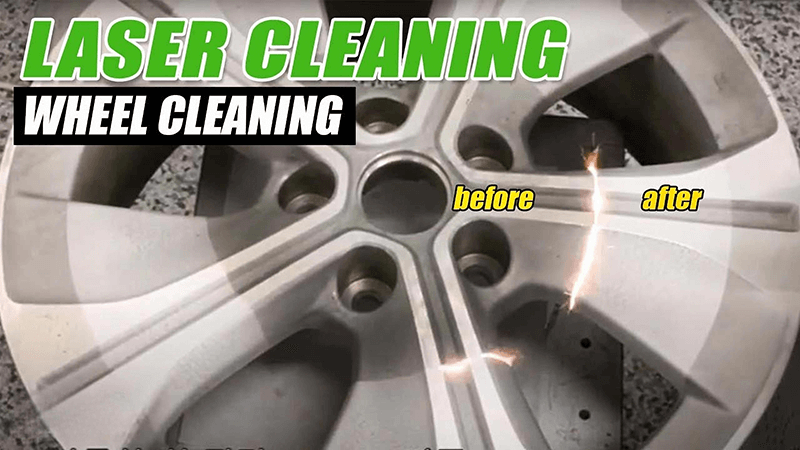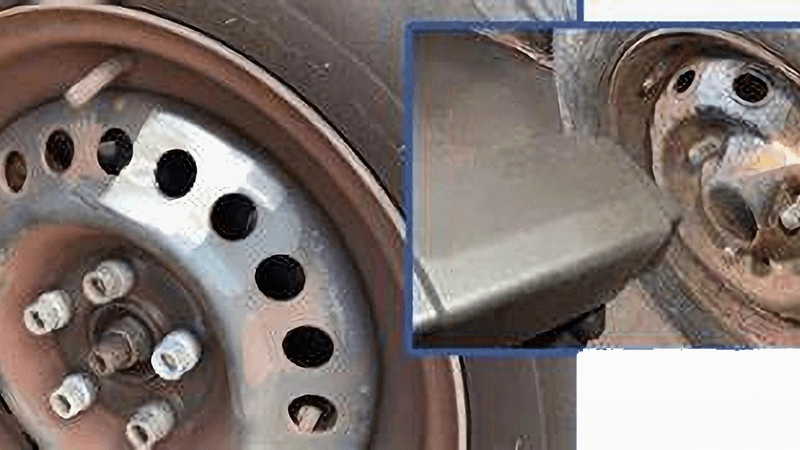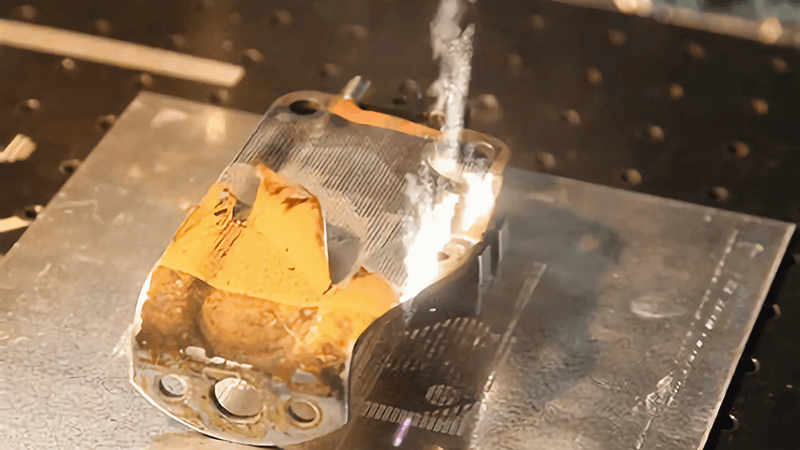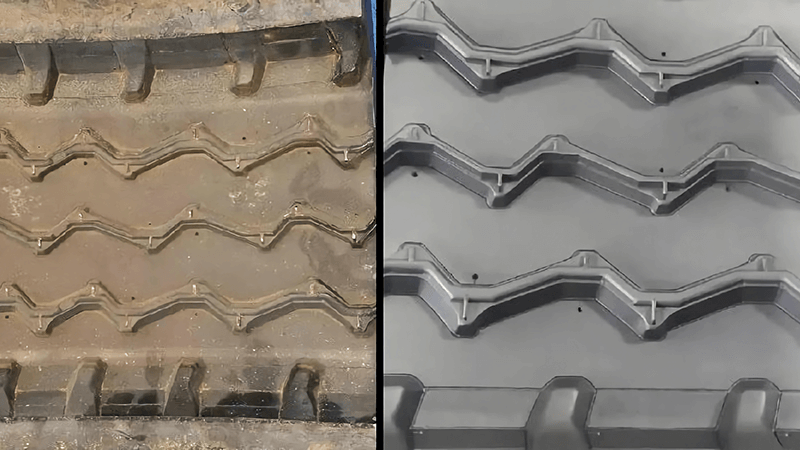Chrome rust can feel like the end of the road for classic car lovers. The fear of scratching the shine or using harsh chemicals is real — and frustrating.
The best way to remove rust from chrome car parts is pulsed laser cleaning. It precisely eliminates corrosion without damaging the chrome finish, unlike sandblasting or chemical dips.
Chrome isn’t just about looks. It’s a symbol of precision and timeless quality. That’s why removing rust the wrong way can ruin more than just a surface. I’ve seen many classic parts lose their value because of poor rust removal choices. But there’s a better, safer solution — let me show you how.

How can I get rust off of chrome car parts?
Rust on chrome is frustrating. Abrasive pads leave scratches, and chemical dips risk damaging the base metal. It feels like there’s no perfect fix.
Pulsed laser cleaning removes rust from chrome parts without abrasion or chemicals. It’s safe for the chrome finish, highly targeted, and efficient.
Why rust removal is tricky with chrome
Chrome plating is thin — often under 0.1mm — and sits on steel or other metals. When rust forms, it’s usually from beneath or around surface damage. Sandpaper might grind off the rust, but it also damages the plating. Chemicals can work, but they risk over-etching, especially on intricate parts like grilles or trim pieces.
What makes pulsed lasers different?
| Method | Chrome Safe? | Needs Chemicals? | Precision | Heat Impact |
|---|---|---|---|---|
| Sandpaper | ❌ | No | Low | Low |
| Chemical Soak | ⚠️ Risky | Yes | Low | Low |
| Sandblasting | ❌ | No | Medium | Medium |
| Pulsed Laser Cleaning1 | ✅ Yes | No | High | Very Low |
Laser cleaning works by delivering energy in pulses — short bursts of light that vaporize rust, layer by layer, without heating the chrome underneath. The beam is controllable to the millimeter, which makes it ideal for precision jobs like emblems, bumpers, or trim.
A real-world restoration
A classic car enthusiast once brought us a 1970s chrome bumper. It had years of oxidation and deep-seated rust. Traditional methods would've either scratched it or not reached into detailed areas. Using our Kirin pulsed laser cleaning machine, we gently cleared the corrosion, revealing mirror-like chrome with no distortion. The client was amazed — and so were we.

What is the best way to clean rust off chrome?
You might find many DIY suggestions online — foil and coke, vinegar soaks, or fine steel wool. But these often don’t deliver consistent or safe results.
The best method to clean rust off chrome is with pulsed laser cleaning because it removes oxidation precisely without scratching or chemical reaction.
Old-school vs modern tech
Most home methods focus on soft abrasives or acids. They can work on light rust but not deep corrosion. Plus, results vary, and mistakes can be irreversible.
Laser cleaning systems2, especially from Kirin Laser, use adjustable energy levels. This means whether it's light surface oxidation or heavy rust, we can set the exact level of cleaning intensity3.
How it works, step by step:
- Assessment: Identify chrome thickness4, rust depth, and part geometry.
- Calibration: Set the pulsed laser to match the chrome’s tolerance.
- Cleaning: Target only rusted zones without harming the base metal.
- Inspection: Check for leftover debris or missed patches.
- Final pass: A polish pass to restore brightness.
The result? No chemical residue, no chrome loss, no metal warping.

Does WD-40 get rust off chrome?
WD-40 is a go-to product for many mechanics and car lovers. It loosens rust, stops squeaks, and adds shine. But when it comes to chrome restoration, it has limits.
WD-40 can loosen surface rust on chrome but cannot remove deep corrosion or fully restore a part. For best results, pulsed laser cleaning is the superior option.
What WD-40 can and can't do
| Task | WD-40 | Pulsed Laser Cleaning |
|---|---|---|
| Light rust removal5 | ✅ Yes | ✅ Yes |
| Heavy corrosion6 | ❌ No | ✅ Yes |
| Chrome-safe7 | ⚠️ Mostly | ✅ Yes |
| Chemical-free | ❌ No | ✅ Yes |
| Long-term solution | ❌ No | ✅ Yes |
WD-40 works by soaking into rust and displacing moisture. It's great as a quick fix or when prepping a surface. But it doesn’t remove rust — it just loosens it for you to scrub off. That scrubbing is where damage happens.
Where laser cleaning wins
Instead of relying on soaking or brushing, a pulsed laser system evaporates rust precisely. No contact, no risk. It's a one-step process that leaves no residue, unlike WD-40, which must be wiped clean and may attract dirt afterward.
For professionals restoring valuable or vintage chrome, laser cleaning is the reliable route.

What is the best way to clean chrome?
Keeping chrome clean is more than just rust removal. Fingerprints, oxidation, grime — they all dull the shine. But using the wrong products can cause micro-scratches or leave cloudy residue.
The best way to clean chrome — without damaging it — is to use non-contact methods like pulsed laser cleaning for rust and gentle microfiber cloths for routine care.
Routine chrome maintenance tips
| Task | Tool/Product | Frequency |
|---|---|---|
| Dust removal | Microfiber cloth | Weekly |
| Shine boost | Chrome polish (non-abrasive) | Monthly |
| Rust spot removal | Pulsed laser cleaner (spot mode)8 | As needed |
| Deep clean | Laser + degreasing prep | Seasonally |
Don’ts of chrome care
- Don’t use steel wool — even fine grade — it scratches.
- Don’t use acidic cleaners — they etch and weaken plating.
- Don’t scrub dry — always use water or lubricant.
- Don’t delay rust removal — corrosion spreads fast.
With Kirin Laser’s cleaning system, you can safely address oxidation, road salt buildup, and rust without affecting the mirror finish. For long-term protection, a clean chrome surface is essential — and laser cleaning9 keeps it intact from the start.

Conclusion
Chrome parts deserve better than sandpaper and acid. They represent craftsmanship and detail — and they should be treated with care. At Kirin Laser, I’ve helped countless customers restore their parts to factory shine using pulsed laser cleaning. It’s chemical-free, safe, and precise. Whether you're restoring a classic bumper or maintaining modern trim, this technology gives you professional results without compromise. Don’t risk your chrome — choose a cleaner10 that respects it.
-
Explore how Pulsed Laser Cleaning can effectively restore chrome without damaging the surface, ensuring precision and safety. ↩
-
Explore the advantages of laser cleaning systems for effective rust removal without damaging the base metal. ↩
-
Discover how adjusting cleaning intensity can optimize rust removal and protect your metal surfaces. ↩
-
Understanding chrome thickness is crucial for effective rust removal; learn how it impacts the cleaning process. ↩
-
Explore this link to understand how WD-40 effectively tackles light rust and its limitations in the process. ↩
-
Discover why WD-40 is not suitable for heavy corrosion and what alternatives exist for better results. ↩
-
Learn about the safety of using WD-40 on chrome and the best practices for maintaining chrome finishes. ↩
-
Learn how pulsed laser cleaners effectively remove rust while preserving the chrome finish. ↩
-
Discover the technology behind laser cleaning and its benefits for chrome maintenance. ↩
-
Find the best laser cleaning machine and laser cleaning solutions from Kirin Laser, clicking this link to get your best product. ↩





